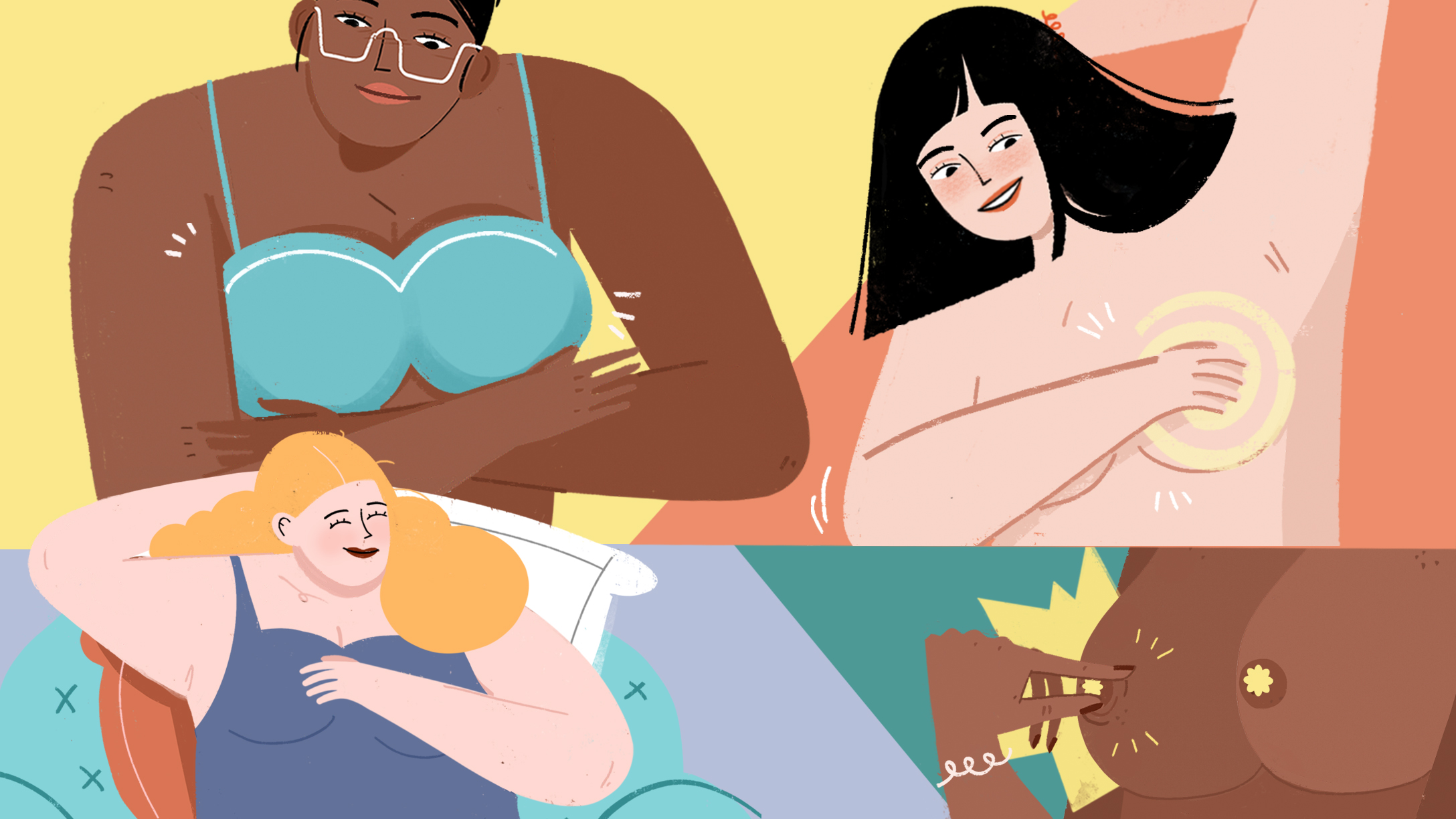
October is National Breast Cancer Awareness Month.
That means that this month you'll see more ribbons, more ladies dressed in pink to walk for the cure, and more reminders than ever to take care of your own breast health!
Look, let's be honest: Most of the women I know would never dream of skipping their kid's six-month dental appointment, but when it comes to our own health, we never seem to have the time.
October is a good reminder that we all need to make the time, and take care of our own health needs!
Breast cancer is usually treatable if it's caught early, so check for anything that seems off with the girls, from swelling and redness to a new dimple that wasn't there before.
It's time to schedule that mammogram (and a pelvic exam while you're at it).
Most important of all, it's time to learn how to do a top-notch breast self-exam — your boobs are too important to ignore!
Scroll through below to learn how — and hit "control" and "p" on your keyboard to print out this guide for your bathroom if you ever need a refresher.
Step #1: Lie Back On Your Bed
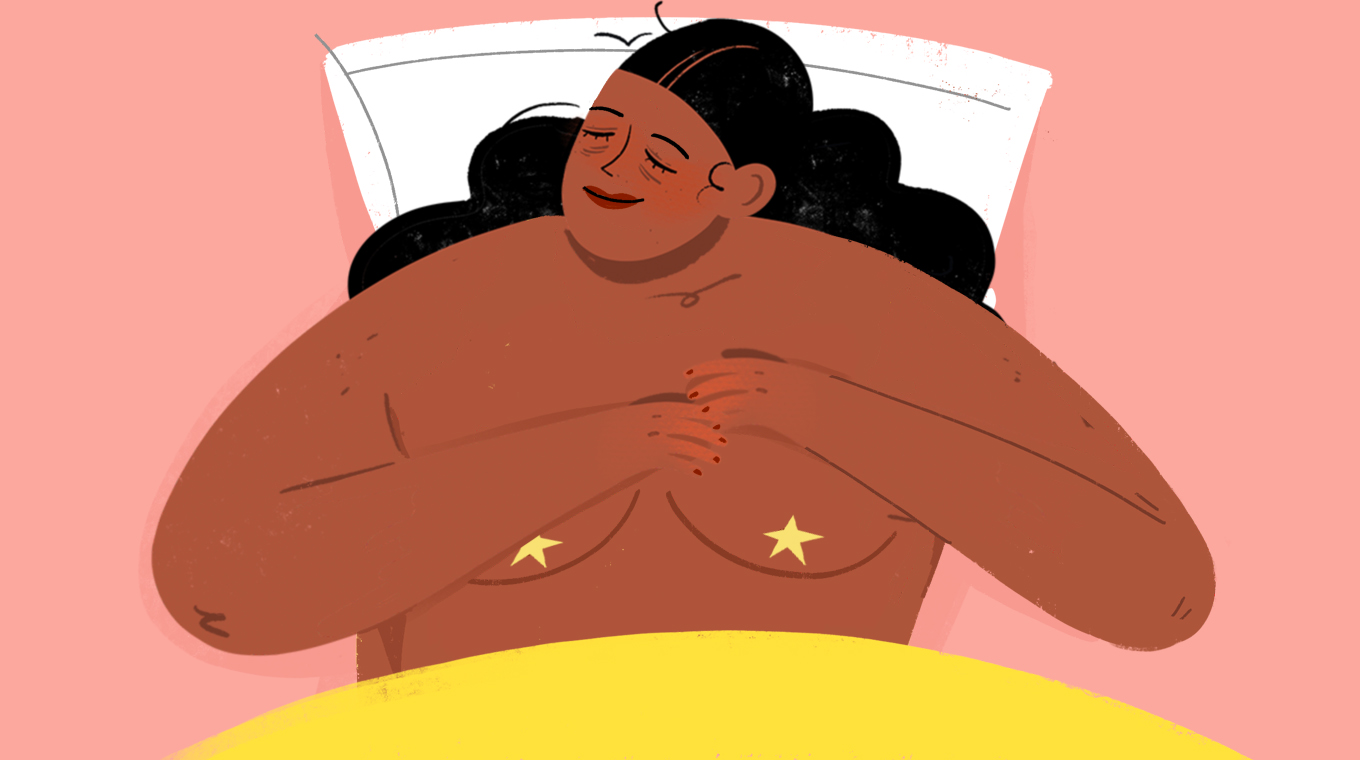
There are lots of different ways to do a self-exam — for example, it's a good idea to give yourself a once-over in the shower — but this is the simplest system.
Lie back comfortably on your bed, just like you would at the doctor's office.
Take your top all the way off, and make sure that you're in a comfy position and won't be distracted or disrupted.
Step #2: Prop Your Arm Behind Your Head

Recline back on a pillow or two, but make sure you're lying evenly on your back, and aren't turned to either side.
Next, prop one arm up on the pillow by your head. We recommend starting with your non-writing arm by your head.
This position will spread and stretch the breast on that side out, making it easier to feel any lumps that could be hiding deep inside.
Step #3: Lightly Press
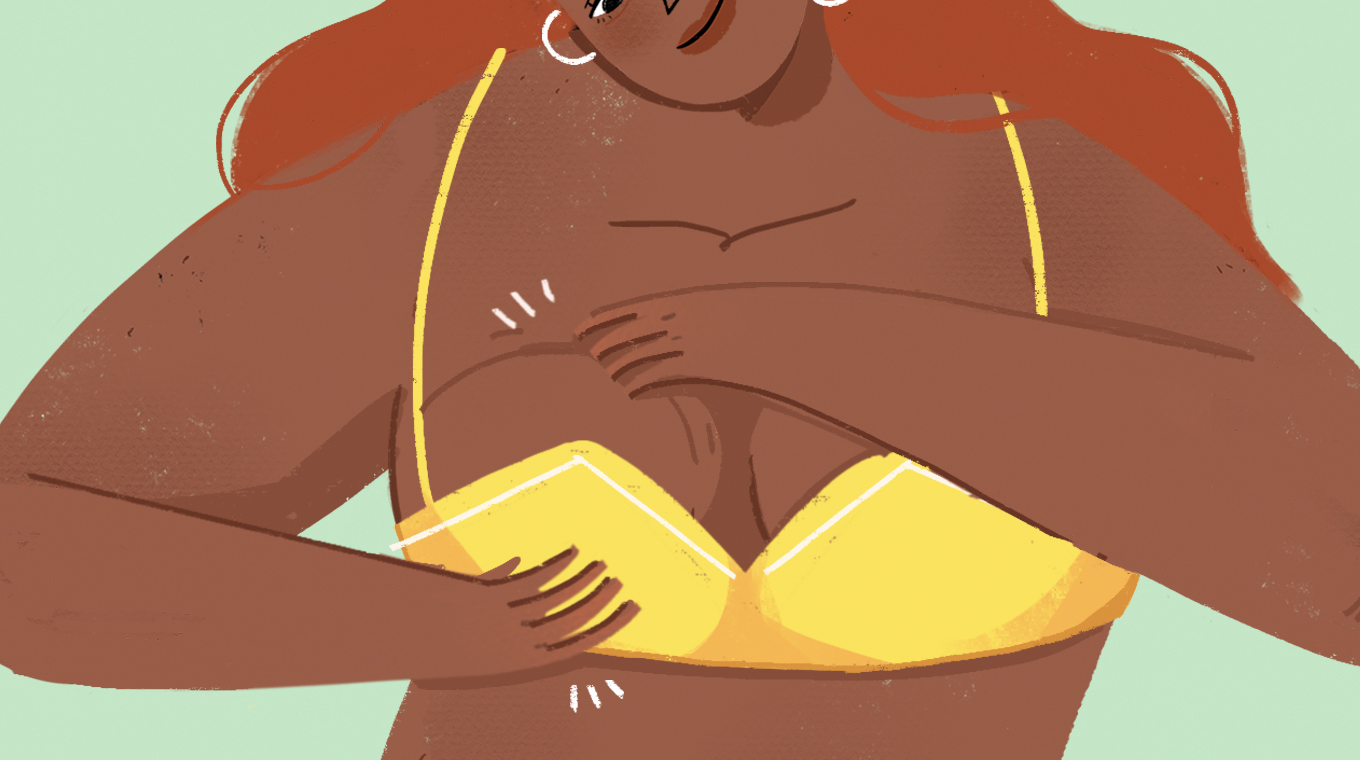
Using your writing hand, press gently but firmly into your boob.
Instead of using the very tips of your fingers, try using the pads of your fingers (the fleshy areas between the joints) to feel for anything.
Keep your fingers tightly together like you're giving a high-five. Lining up all your fingers makes it easier to suss out where there might be lumps or divots.
Step #4: Make Small Circles
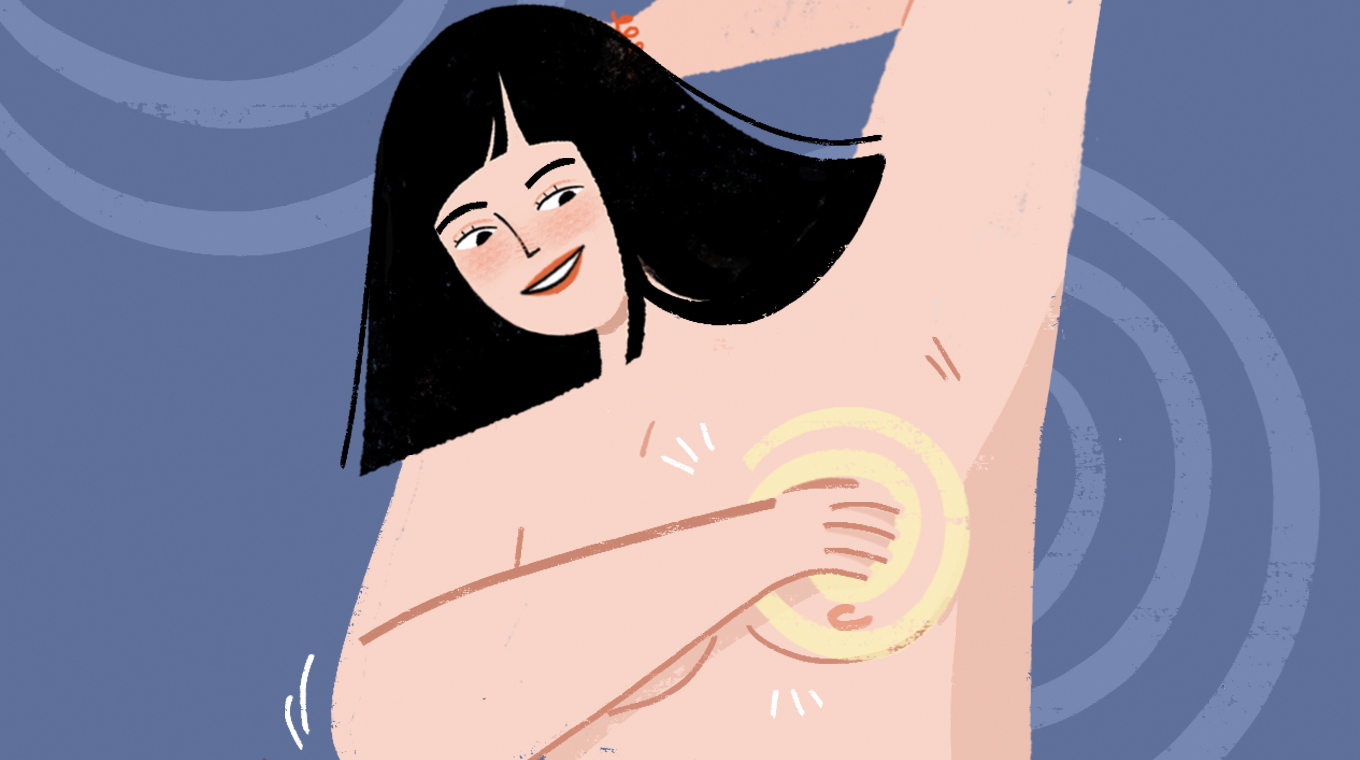
With your fingers together, press gently along your boob in small circular motions.
It's a good idea to start with your armpit, which is full of lymph nodes — sometimes swollen lymph nodes are the first sign of an infection or a more serious problem.
Work your way slowly in from your armpit, pressing in circles as you go.
Make sure to cover your whole breast, from the underside all the way up to your collarbone.
Step #5: Squeeze Your Nipples
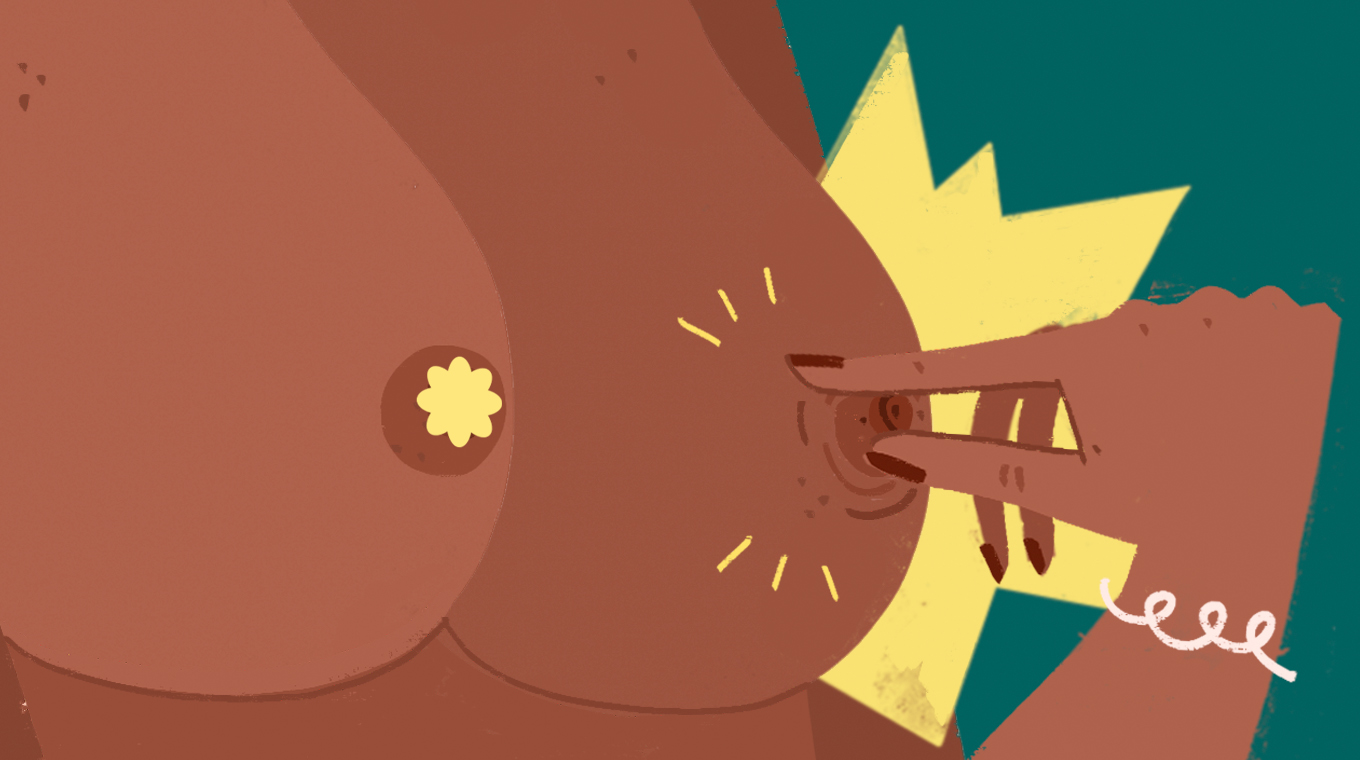
Once you're done checking all the fleshy areas of your breast, return to the center to check your nipple.
Squeeze your nipple gently — it might sound a little bit saucy, but pinching slightly will help you detect any unusual discharge.
You should also check closely to make sure your nipples are behaving like they normally do.
For example, if you're normally "perky" but your nipples are lying flat or inverted, that's something your doctor needs to know.
Step #6: Take A Good Look
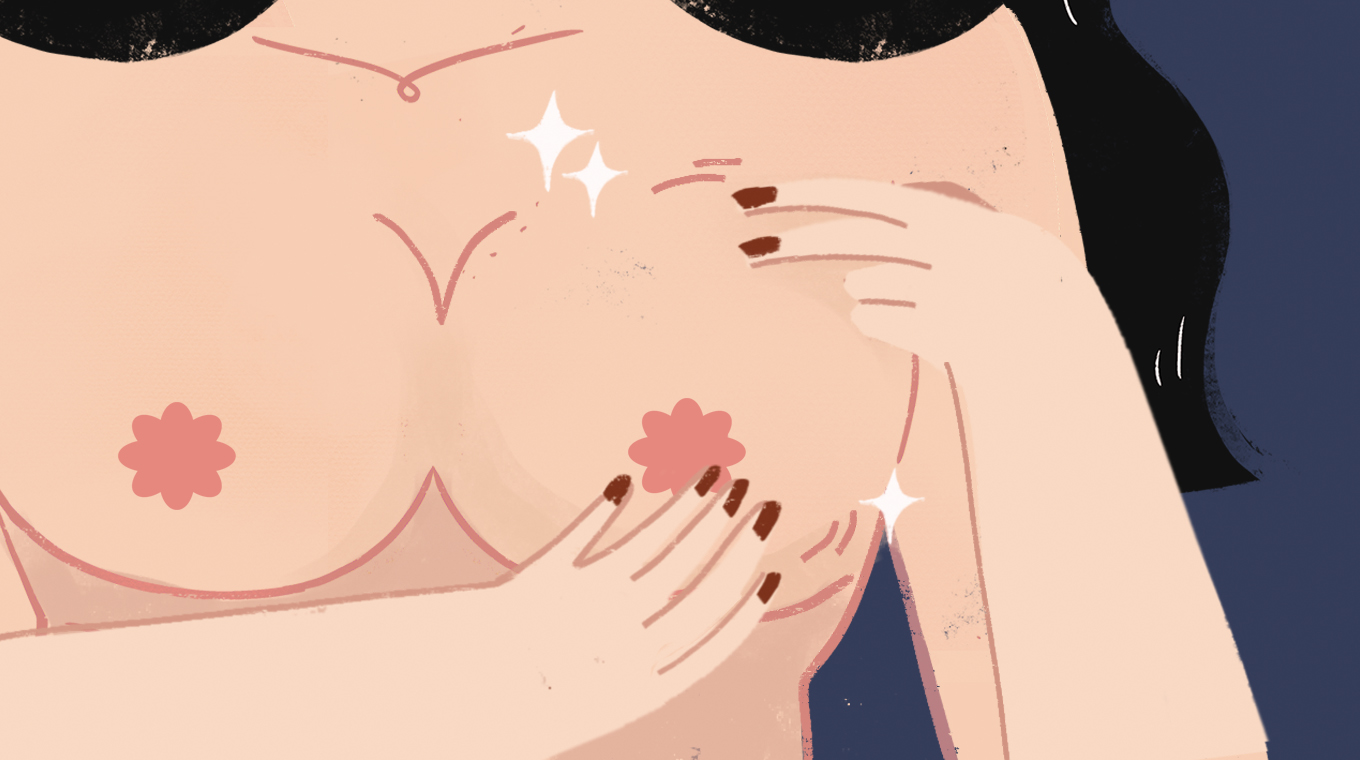
You'll need to take a good look at your boobs once you're done with the exam.
It's really important to tell your doctor about any visible changes, so take a look for any new blemishes, dimples, or changes in skin texture — particularly a texture that feels rough like an orange peel.
You'll also want to note if your breast seems redder, bigger, or unusually warm.
Step #7: Note Anything Unusual
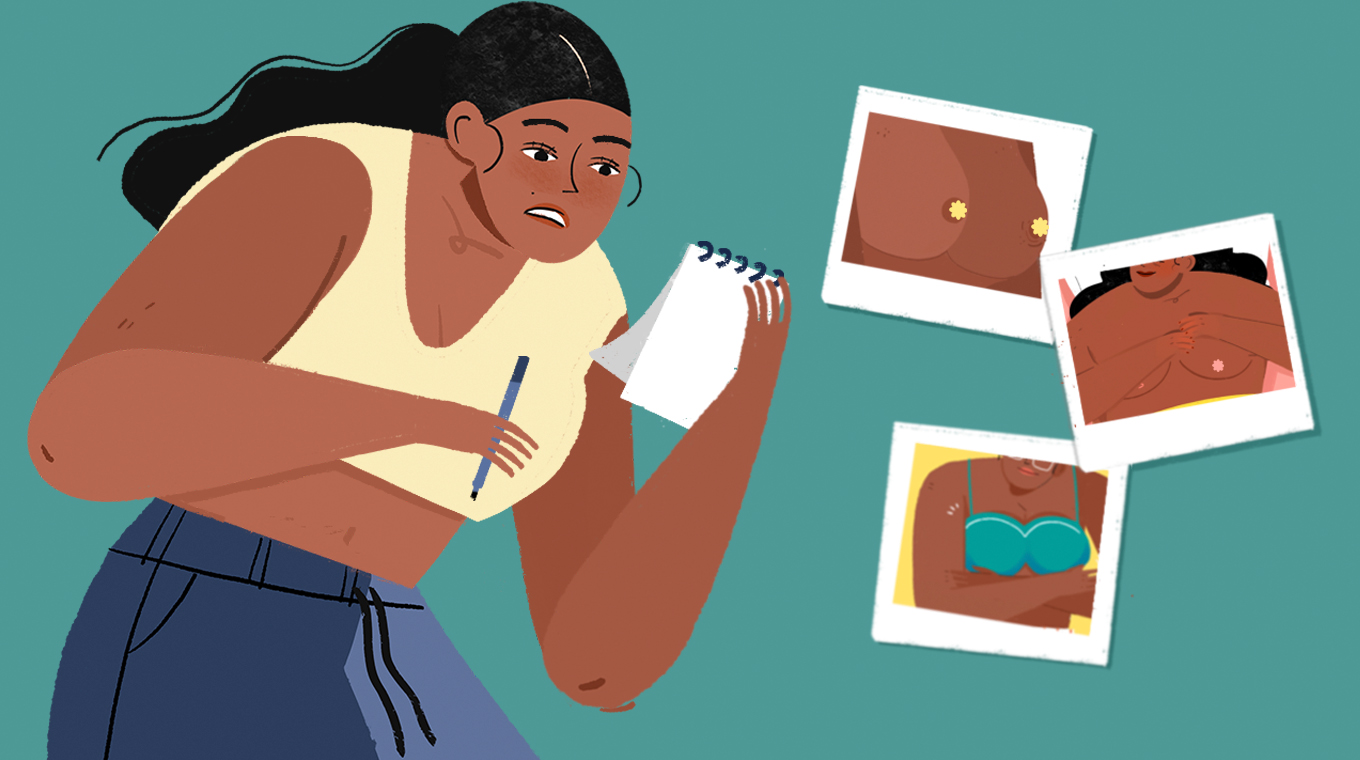
If you do find anything unusual during your self-exam, make sure to jot down a quick note describing what you felt and roughly where it is on your breast.
Remember, there are about a million different reasons you could have a lump in your breast, and most of the time, they're totally harmless.
Even if you do have a lump or a strange-feeling spot, don't worry, just make an appointment with your doctor to get it assessed.
Step #8: Switch And Repeat
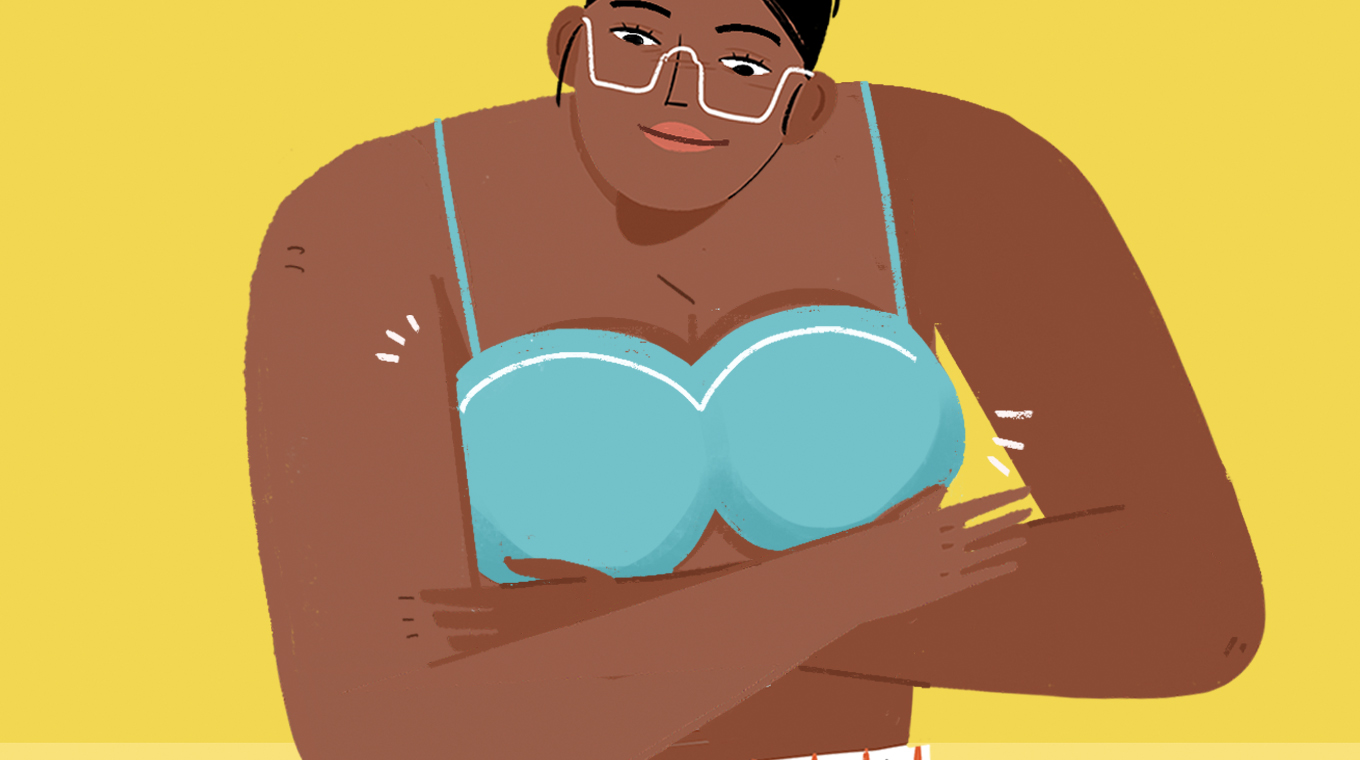
Once you've completed all the steps for the first side, switch boobs!
Repeat all the same steps as you did for the first side, but add one final step at the end.
When you're all done, compare both boobs, and check for any dramatic differences between the two that didn't used to be there.
Now that you're done with your self-exam, make sure to SHARE this guide with all the hardworking ladies in your life! You never know when this could save someone's life!




